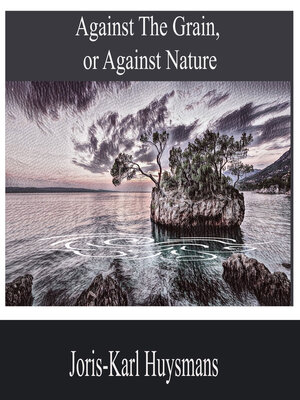
Sign up to save your library
With an OverDrive account, you can save your favorite libraries for at-a-glance information about availability. Find out more about OverDrive accounts.
Find this title in Libby, the library reading app by OverDrive.



Search for a digital library with this title
Title found at these libraries:
| Library Name | Distance |
|---|---|
| Loading... |
"Against Nature" or "Against the Grain"—is an 1884 novel by the French writer Joris-Karl Huysmans. Let's explore this intriguing work: Plot Summary: The narrative revolves around a single character: Jean des Esseintes. He is an eccentric, reclusive, and ailing aesthete. As the last scion of an aristocratic family, Des Esseintes despises nineteenth-century bourgeois society. His goal is to retreat into an ideal artistic world of his own creation. The novel primarily consists of a catalogue of Des Esseintes's neurotic aesthetic tastes, musings on literature, painting, religion, and hyperaesthetic sensory experiences. "À rebours" delves into themes associated with the Symbolist aesthetic, breaking away from Naturalism and becoming the epitome of "Decadent" literature. It profoundly influenced works like Oscar Wilde's ""The Picture of Dorian Gray""1. Background: Huysmans, the author, underwent a significant shift in his writing style. His early works were Naturalist, depicting the drudgery of working-class life in Paris. However, he found this approach limiting and decided to apply the minutely documented realistic detail to a portrait of an exceptional individual: Jean des Esseintes. The character of Des Esseintes is partly based on Huysmans himself, sharing similar tastes but taken to greater extremes. Huysmans transformed this "wild and gloomy fantasy" into the novel ""À rebours""12. "Against Nature" invites readers into a world of decadence, introspection, and aesthetic obsession."







